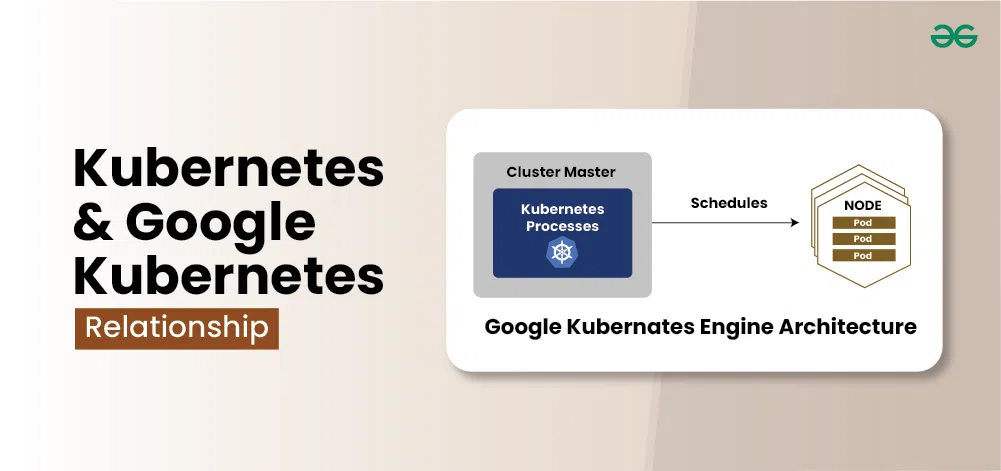
|
|
Managing and deploying applications efficiently is crucial for businesses. Kubernetes and Google Kubernetes Engine (GKE) are two key technologies that have revolutionized this process. Kubernetes is an open-source platform designed for automating the deployment, scaling, and operation of application containers. Google Kubernetes Engine, on the other hand, is a managed Kubernetes service provided by Google Cloud that simplifies the use of Kubernetes by offering a user-friendly interface and additional features. Understanding the relationship between Kubernetes and GKE is essential for anyone involved in modern software development.  Relationship Between Kubernetes and Google Kubernetes Engine Important Topics to Understand the Relationship Between Kubernetes and Google Kubernetes Engine What is Kubernetes?Kubernetes, often abbreviated as K8s, was initially developed by Google and is now maintained by the Cloud Native Computing Foundation (CNCF). It was released in 2014 and has since become the leading container orchestration platform. Kubernetes allows developers to deploy, manage, and scale containerized applications using a cluster of servers. Key features of Kubernetes include:
The benefits of using Kubernetes are numerous. It provides a consistent environment for development, testing, and production. It helps achieve high availability and scalability, and it reduces the complexity of managing large-scale applications. Kubernetes is used in various industries, from finance to healthcare, due to its robustness and flexibility. What is Google Kubernetes Engine(GKE)?Google Kubernetes Engine is a managed service that makes it easy to use Kubernetes on Google Cloud Platform (GCP). GKE provides the infrastructure, management tools, and support needed to deploy and manage Kubernetes clusters without the overhead of manual setup. Key features of GKE include:
Using GKE offers several advantages over self-managed Kubernetes clusters. It simplifies the deployment and management process, reduces operational overhead, and provides a seamless integration with other Google Cloud services. This makes GKE an attractive option for businesses looking to leverage Kubernetes without investing heavily in infrastructure management. The Architecture of KubernetesKubernetes architecture is composed of several components that work together to manage containerized applications. The main components include:
These components interact to ensure the smooth operation of applications within the cluster. The master node manages the overall state of the cluster, while worker nodes execute the tasks assigned by the master. The Architecture of Google Kubernetes EngineGoogle Kubernetes Engine builds upon the standard Kubernetes architecture but adds several enhancements to improve usability and integration with Google Cloud. The key differences and enhancements include:
Setting Up Kubernetes on GKEBelow are the steps to set up kubernetes on GKE:
Common challenges include managing resource limits, ensuring high availability, and maintaining security. However, GKE provides tools and features to address these challenges effectively. Managing Applications with Kubernetes on GKE
These practices ensure that applications run smoothly and securely on GKE, leveraging the platform’s advanced features and integrations. Case Studies and Real-world ApplicationsMany organizations have successfully implemented Kubernetes on GKE. For example:
These case studies highlight the flexibility and power of GKE in various industries, demonstrating its effectiveness in managing complex, large-scale applications. Future of Kubernetes and GKEThe future of Kubernetes and GKE looks promising, with several exciting developments on the horizon:
These developments will continue to drive the adoption and evolution of Kubernetes and GKE, making them even more valuable for modern application development and deployment. ConclusionKubernetes and Google Kubernetes Engine are at the forefront of modern application deployment and management. Kubernetes provides a powerful and flexible platform for container orchestration, while GKE simplifies its use with managed services and additional features. The relationship between Kubernetes and GKE is symbiotic, with GKE enhancing the core capabilities of Kubernetes and making it more accessible to businesses of all sizes. As technology continues to evolve, Kubernetes and GKE will remain essential tools for developers, helping them build, deploy, and manage applications more efficiently and effectively. |
Reffered: https://www.geeksforgeeks.org
| System Design |
Type: | Geek |
Category: | Coding |
Sub Category: | Tutorial |
Uploaded by: | Admin |
Views: | 17 |